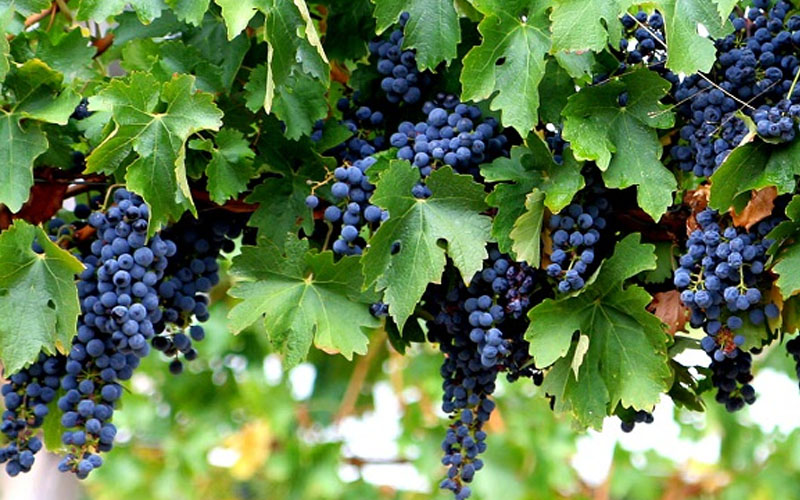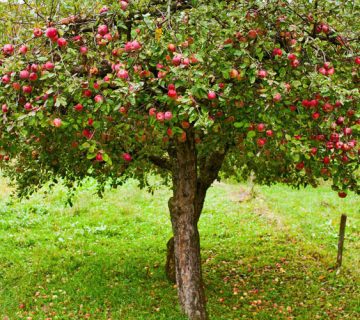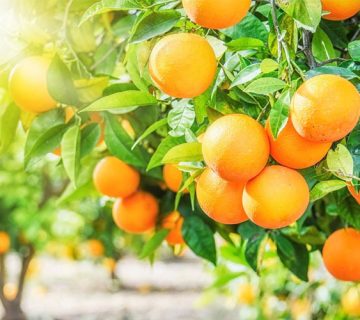Macro-N (nitrogen) deficiency
The first sign of nitrogen deficiency is yellowing or pale greening of the lower leaves (older leaves). The growth of shoots and leaves is reduced and the plant appears weak and stunted. The number and size of berries and clusters are reduced and the crop yield is reduced. In severe nitrogen deficiency, the leaves wilt and shrink, and the berries do not grow sufficiently. Due to the role of nitrogen in the production of chlorophyll, the leaves lose their green color, but more important than color is the reduction in growth and production.
 |
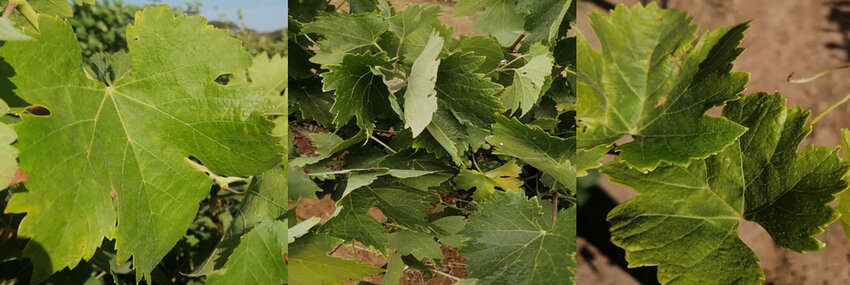 |
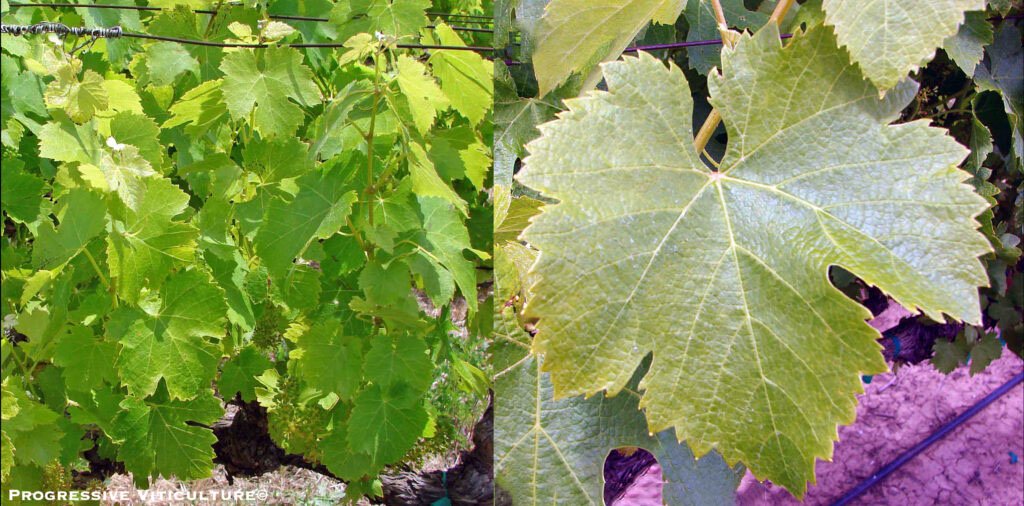 |
Kimat’s proposed solution:
Macro-P (phosphorus) deficiency
Symptoms of phosphorus deficiency in grapes include yellowing between the veins of older leaves (top or middle of the vine) which gradually turns the leaves red. If phosphorus deficiency progresses, the red areas between the veins turn into hard and stiff tissue. Other symptoms of deficiency include shortened distance between nodes (short branches), reduced number and size of fruits, especially during the flowering and fruiting stages.
 |
 |
Kimat’s proposed solution:
Macro-K (Potassium) deficiency
The first sign of potassium deficiency is yellowing or browning of the margins of older leaves, which gradually progresses toward the center of the leaf. In more severe cases, the leaves may dry out and curl up or down. A grape plant with a potassium deficiency will grow poorly and short, and the branches will become brittle and weak. Vines that are deficient in potassium are less resistant to disease. The fruits will be smaller, have a sourer taste, and be less colorful. The clusters will also become hard and discolored, and in severe cases, the berries will become dry and raisin-like. Potassium plays an important role in the synthesis of sugars and their transfer to the fruit; its deficiency reduces the sugar content and quality of the grapes.
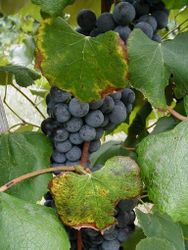 |
 |
Kimat’s proposed solution:
Secondary macronutrient deficiency-Mg (magnesium)
Symptoms of magnesium deficiency in grapes appear mainly on older leaves. There is regional discoloration between the veins (interveinal chlorosis), especially on older leaves. The margins of older leaves turn red or brown, while the part attached to the petiole remains green. As the deficiency progresses, this discoloration spreads to the leaf blade. In severe stages, the stems may become necrotic, leading to reduced or complete loss of clusters.
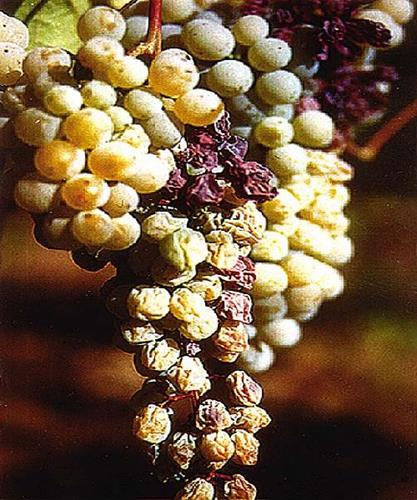 |
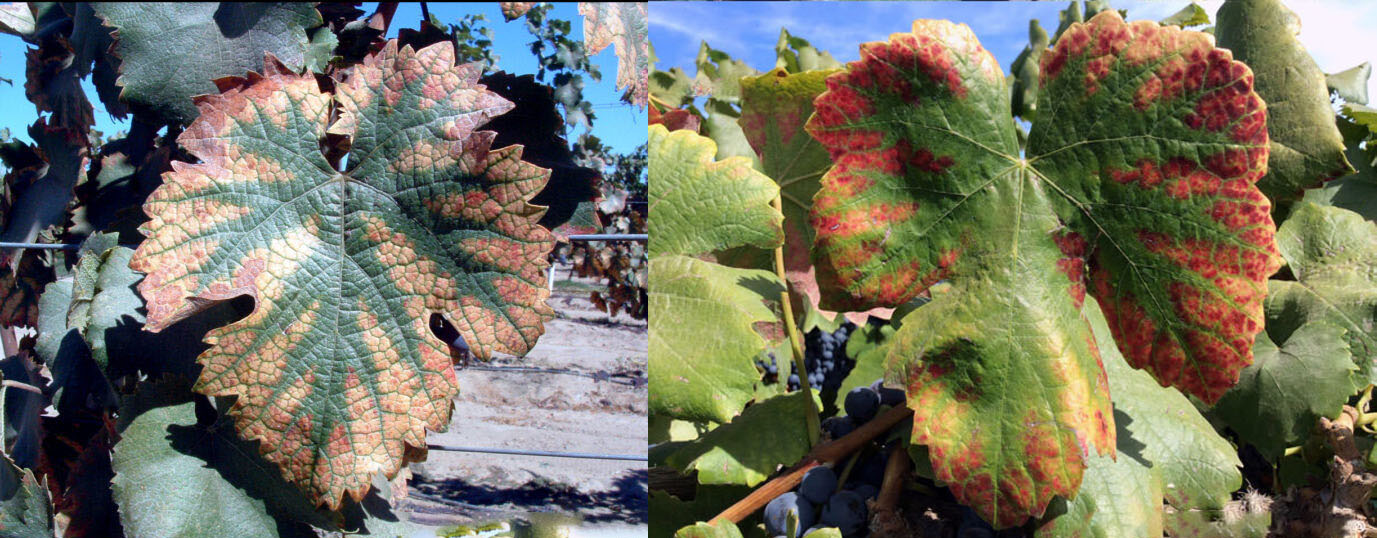 |
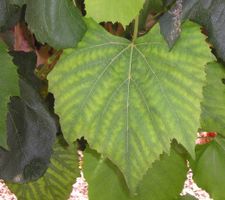 |
Kimat’s proposed solution:
Secondary macronutrient deficiency-Ca (calcium)
The first sign of calcium deficiency is the development of a narrow necrotic band (brown burn) on the edge of the leaves, which gradually progresses towards the junction of the leaf blade and petiole. Other symptoms of calcium deficiency in grapes include stem necrosis and cluster necrosis, softening of the fruit, reduced firmness of the berries and reduced storage properties of the grapes, increased cracking, browning and dropping of the berries, reduced fruit quality, and in severe cases, crushing and rotting of the clusters, and reduced resistance to diseases.
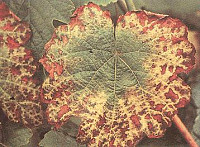 |
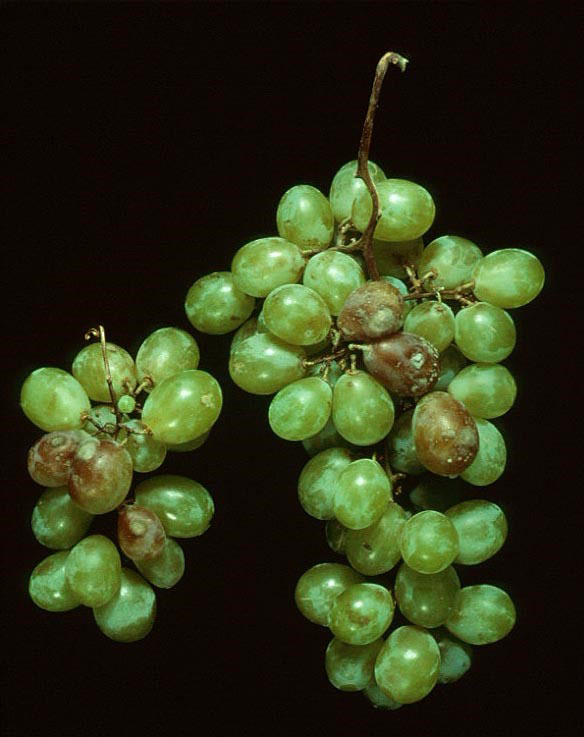 |
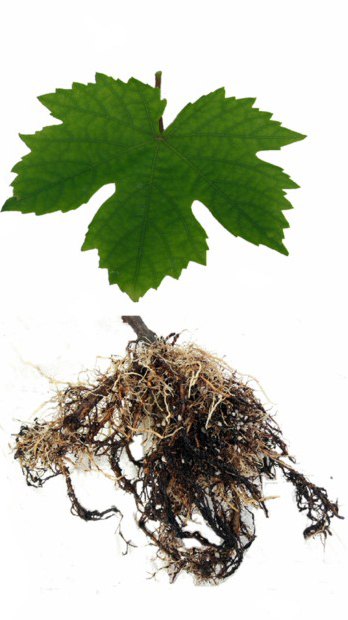 |
Kimat’s proposed solution:
Micro-B (boron) deficiency
Boron deficiency symptoms are first seen in young leaves and growing points. The leaves turn yellow, the interveinal tissues turn yellow and eventually turn brown and dry. At the tips of the branches and before flowering, dark, gall-like bumps develop, which later become necrotic. Reduced or no fruit formation (sterility), scorching and drying of some clusters so that only the stem of the cluster with a few berries remains.
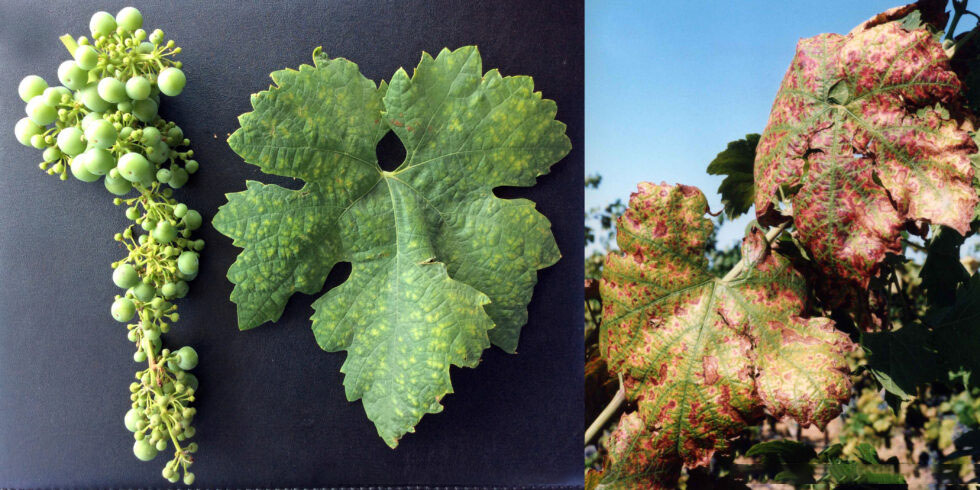 |
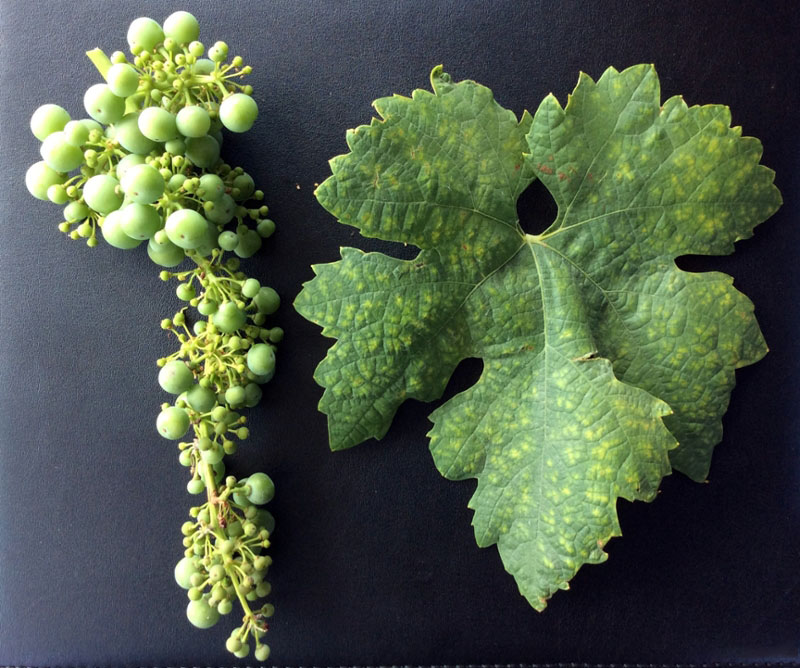 |
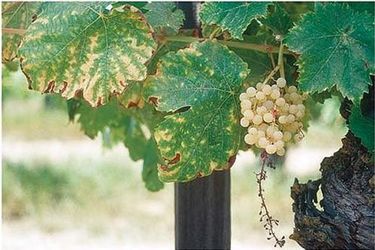 |
Kimat’s proposed solution:
Micro-element deficiency – Fe (iron)
Iron deficiency symptoms include yellowing of young leaves (interveinal chlorosis), where the veins remain green but the leaf blade turns yellow. In advanced stages, the leaves gradually turn white and necrosis or wilting may appear at the edges and areas of the leaf. Growth of new shoots and leaves is slowed and new leaves may not form properly.
 |
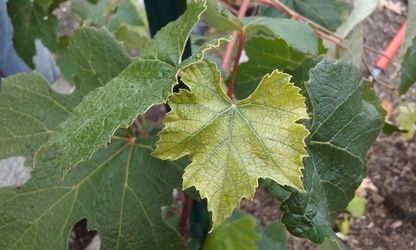 |
Kimat’s proposed solution:
Micro-element deficiency – Mn (manganese)
Manganese deficiency symptoms usually appear 2 to 3 weeks after flowering and are first seen on young leaves and at the base of the shoot. Yellowing between the veins of young leaves (interveinal chlorosis), while the veins remain green. As the deficiency becomes severe, small, multi-faceted yellow spots appear in the interveinal tissues. These symptoms are similar to iron deficiency, but in manganese deficiency, young leaves are less affected. Shoot, leaf and berry growth is reduced, and cluster maturity is delayed. Symptoms are more severe on leaves exposed to the sun.
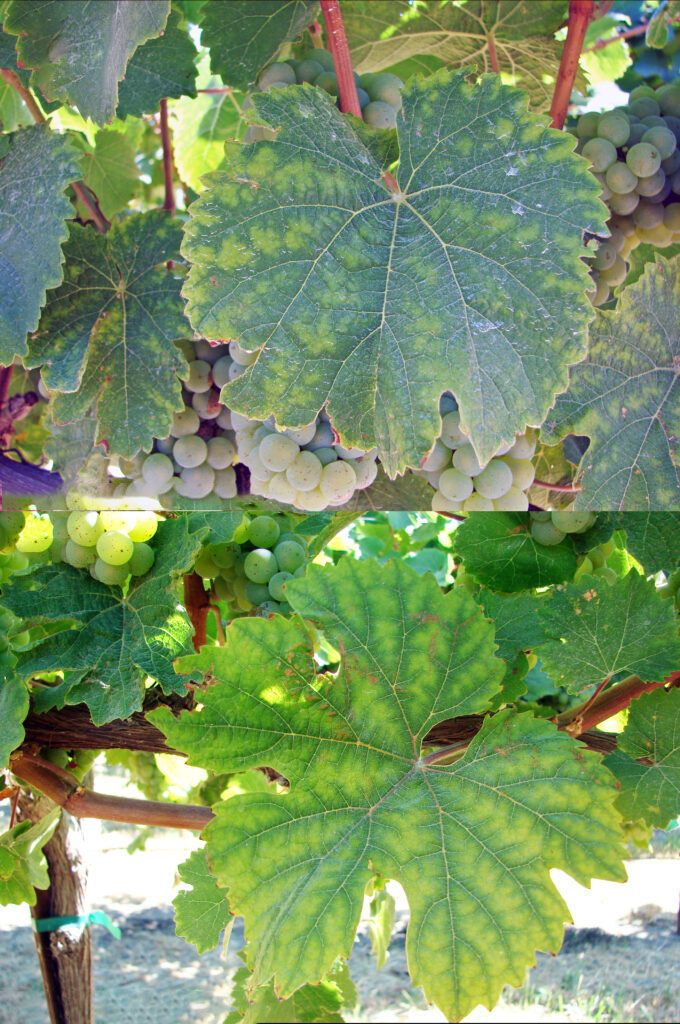
Kimat’s proposed solution:
Micronutrient deficiency – Zn (zinc)
Zinc deficiency is a common problem in vineyards, which has a significant impact on the growth, quality and quantity of the crop. Zinc deficiency causes root growth to stop and branches to not grow properly. Leaves become smaller than normal and lose their natural shape. In young leaves, chlorophyll is reduced and turns yellow between the veins, while the veins remain green or dark green stripes are seen between the veins. Clusters are irregularly formed and the number of berries is much lower than normal.
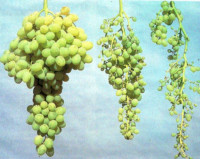 |
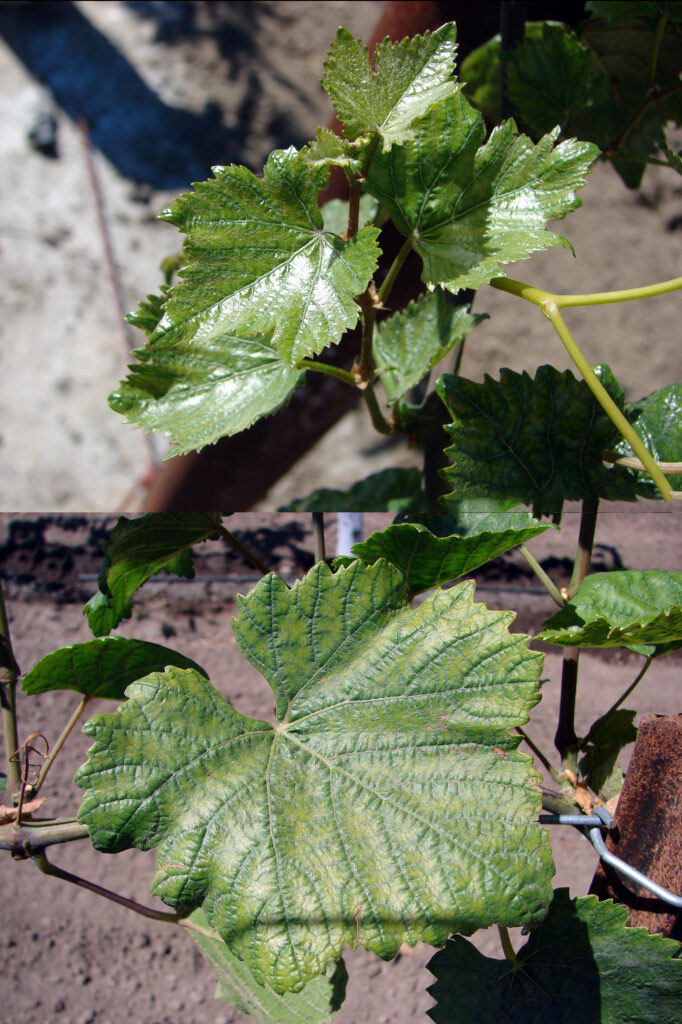 |
 |
Kimat’s proposed solution:


